Sure, let’s dive into the weird and wonderful world of animal eating habits! While many creatures have diets that make sense in the grand scheme of things—lions eat meat, cows munch on grass—some animals have taken a more unorthodox approach, leaving us scratching our heads. If you’re ready to explore some of the animal kingdom’s most baffling dining choices, keep reading. From rocks to…well, things you wouldn’t believe, here are 15 animals with eating habits that truly defy logic.
1. Penguins Prefer Snow Over Fish Popsicles
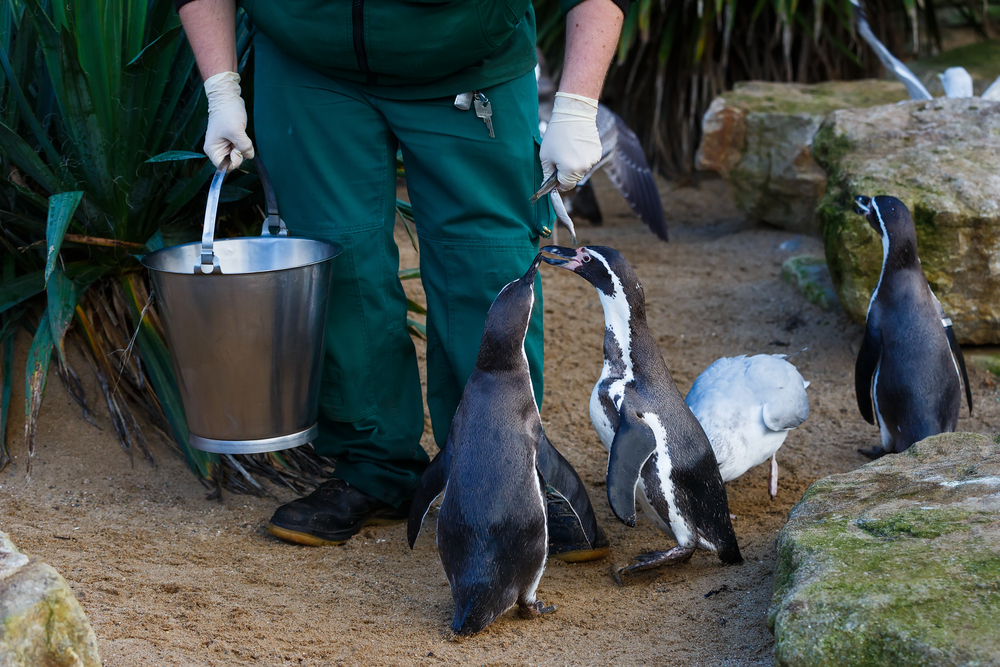
Okay, so we know that penguins are all about that fish life—they dive, they swim, they hunt like pros, right? Well, here’s a twist: some penguins have been observed munching on snow like it’s their favorite snack. You’d think they’d be all about the fishy protein after all that effort, but nope, sometimes a scoop of snow is just what they crave. According to Penguin Science, researchers think it could be a way to stay hydrated or maybe they’re just into the icy crunch. But come on, you waddled all that way for a snow cone? It just seems like their priorities might be a little…frozen.
So next time you’re at the zoo watching these tuxedoed birds, keep an eye out for any sneaky snow gobbling. While the fish might be chilling in their tummies, it seems penguins sometimes prefer a side of snow. Kind of like how we humans might enjoy an ice-cold smoothie after a workout—it’s refreshing and hydrating. Perhaps we’re not so different after all, just swapping out our post-gym protein shakes for icy flakes. Who knew penguins could be so relatable in their quirky dining habits?
2. Pandas Are The Junk Food Junkies Of The Forest
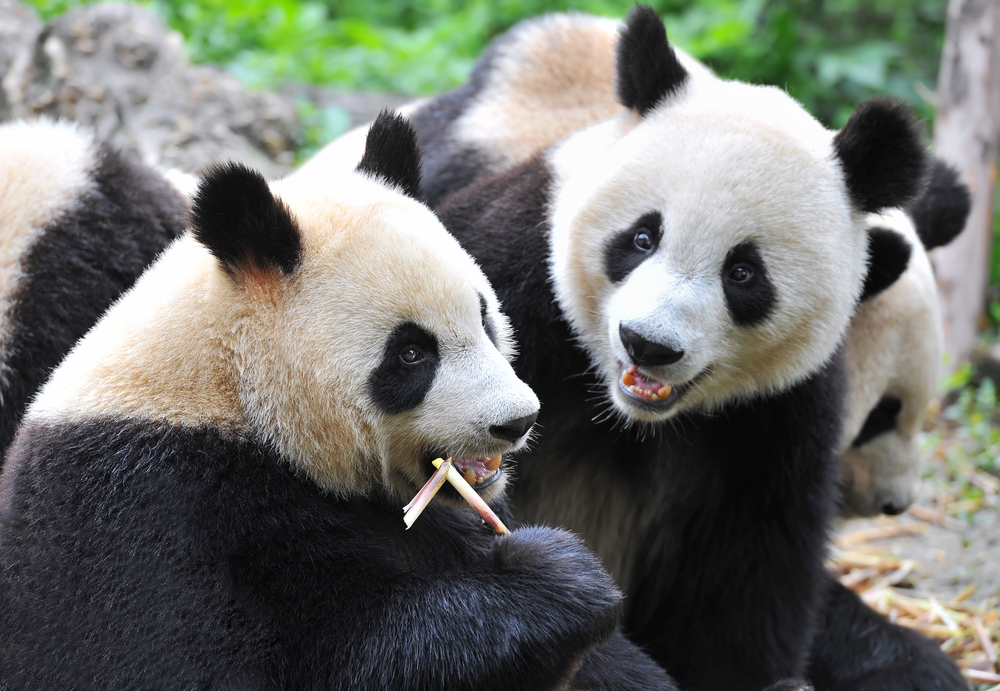
The panda’s diet is one of the most famous in the animal kingdom, but also one of the most puzzling. We all know they’re obsessed with bamboo, munching on it for hours like it’s the only thing on the menu. But here’s the kicker: bamboo isn’t exactly a high-energy food. According to Pandas International, pandas have to eat almost constantly to get the nutrients they need, like someone on a junk food binge who never quite feels full. Imagine having to eat 20 to 40 pounds of food a day just to keep going. It’s like the panda version of living on chips and dip.
You’d think with those powerful jaws and digestive systems, they’d branch out a bit more. But nope, they’re loyal to their low-calorie bamboo, despite being equipped to handle a more varied diet. It’s partly this dietary devotion that makes pandas so tricky to conserve—they’re picky eaters with very specific food demands. So next time you’re snacking on celery sticks, channel your inner panda and embrace the crunch, even if it means you’ll be munching all day long.
3. The Hoatzin Bird: A Leaf-Eating, Stomach-Fermenting Oddball
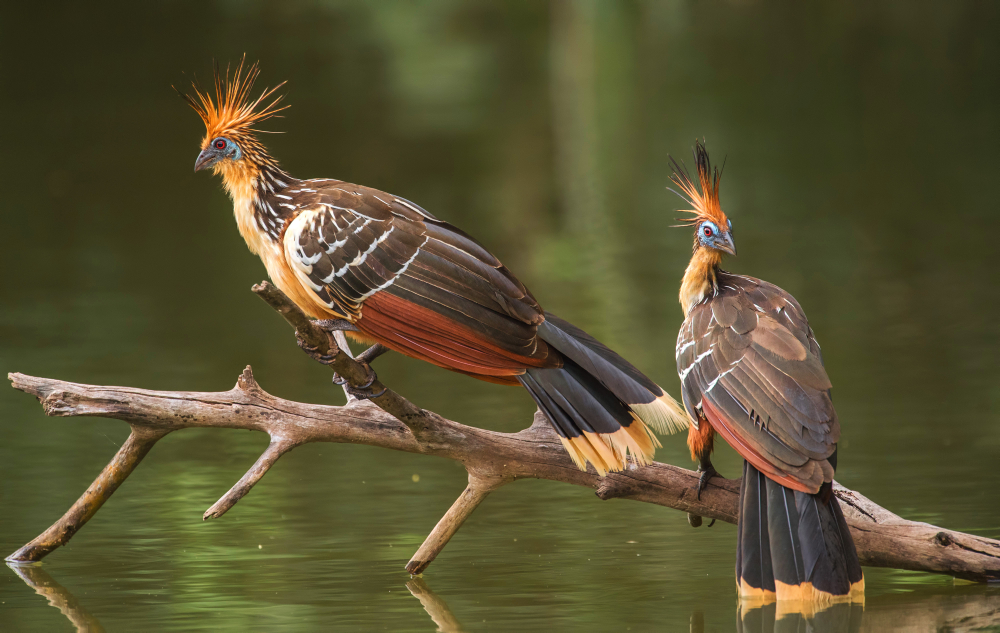
Ever heard of a bird that eats leaves and ferments them in its belly like a cow? Meet the hoatzin, a bird with a diet and digestive system so unique, it could only be described as bizarre. While most birds are all about seeds and insects, the hoatzin casually ignores the norm and chows down on leaves. It even has a specialized stomach that ferments these greens, giving it a distinct, cow-like odor. Now that’s a stinky superpower you don’t often find in the avian world.
And if its eating habits weren’t strange enough, this bird’s digestion process means it’s not exactly the most graceful flier. All that fermentation makes for a bloated belly, resulting in a shaky takeoff—think of it as the bird equivalent of trying to run with a full stomach. Watching these birds can be a real hoot, as they awkwardly navigate their treetop homes. Maybe they’re just proof that no matter how odd your diet, you can still find your niche and thrive.
4. Vampire Bats: Tiny, Winged Bloodsuckers With A Taste For Hemoglobin
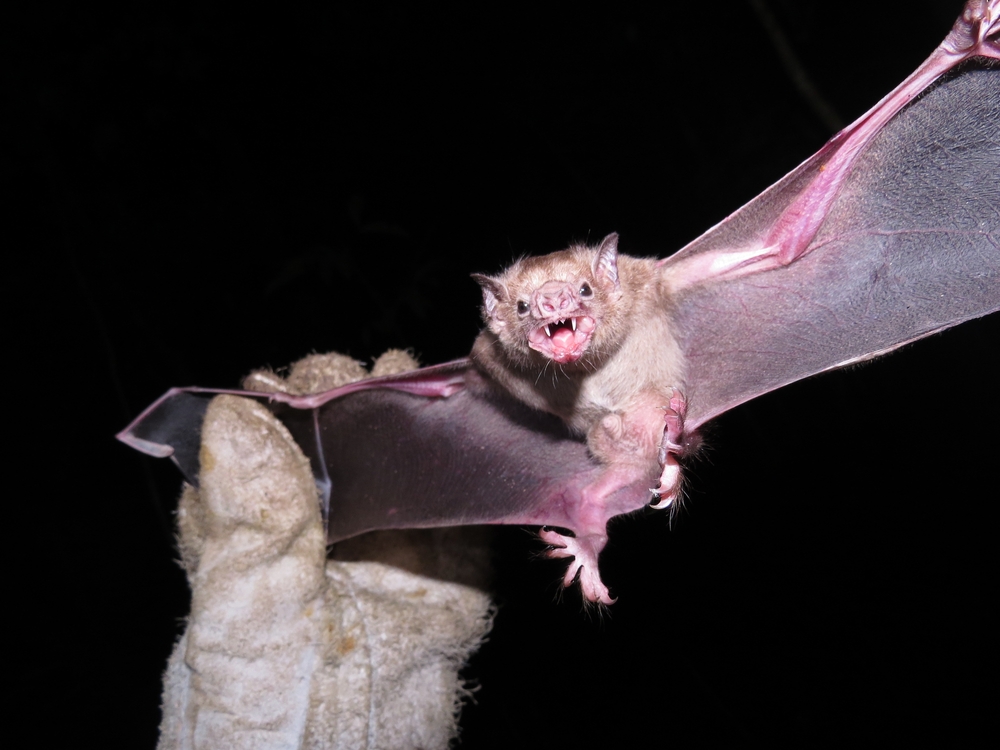
When you think of vampires, you probably imagine Dracula or maybe a sparkly teen heartthrob, but nature has its very own version in the form of vampire bats. These little creatures have a diet that sounds like something out of a horror movie—they drink blood. But don’t worry, they’re not after humans. Instead, they target livestock, using heat sensors on their noses to find the perfect spot for a quick nip. It’s like infrared technology but built-in, allowing them to sneak up on their prey and have a sip without waking them.
Despite their nightmarish feeding habits, vampire bats are pretty fascinating. They’re social creatures that have been known to share their meals with less lucky members of their group. If one bat doesn’t manage to find a meal, another might regurgitate some blood for them—talk about friendship goals! So, while their diet might seem terrifying, their social behavior is surprisingly endearing. It’s a reminder that even in nature, sharing is caring, even if it’s a bit gross.
5. The Oxpecker: Nature’s Feathered Janitor With Peculiar Dietary Preferences
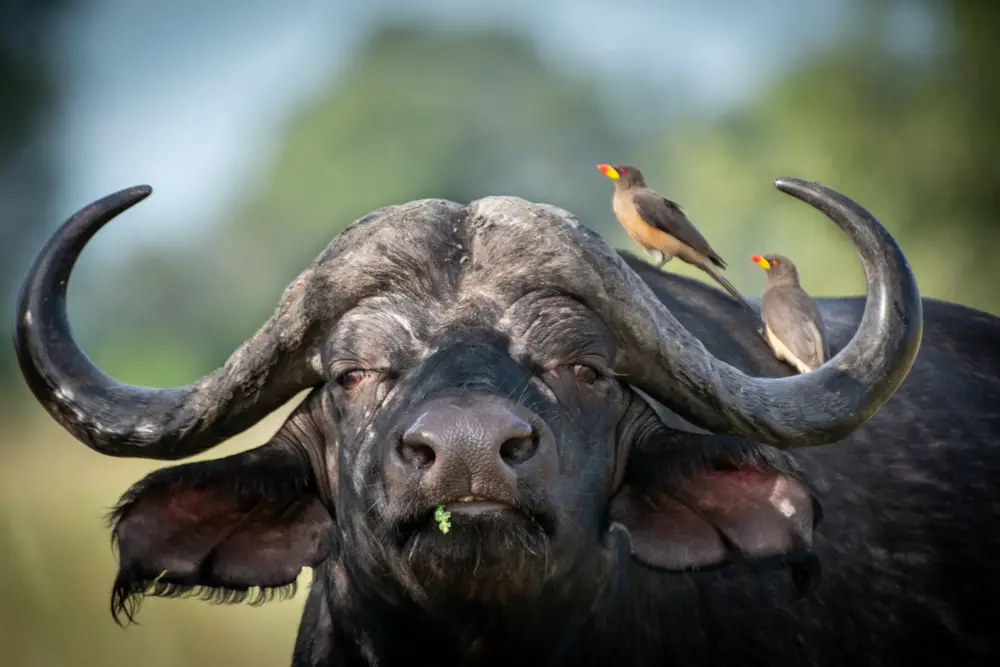
The oxpecker is a bird with a job and a diet that go hand-in-hand, quite literally. Often spotted riding on the backs of large mammals like elephants and rhinos, these little birds are on the lookout for their next meal—parasites. They’ll pick at ticks and other pests, cleaning up their mammal friends in the process. But here’s where things get a little odd: they also have a taste for blood. When they’re not finding enough ticks, they’ll peck at their host’s wounds to keep up their iron intake.
It’s a peculiar partnership, but for the most part, it works out. The mammals get a pest control service, while the birds get a meal. However, their love for blood can sometimes annoy their four-legged friends, turning this symbiotic relationship into a bit of a nuisance. It’s like having a cleaning service that occasionally raids your fridge—but hey, as long as they keep the ticks away, right? It’s a fascinating look at how nature sometimes writes bizarre scripts for its cast of characters.
6. Marine Iguanas: The Salt-Sneezing Vegans Of The Galapagos
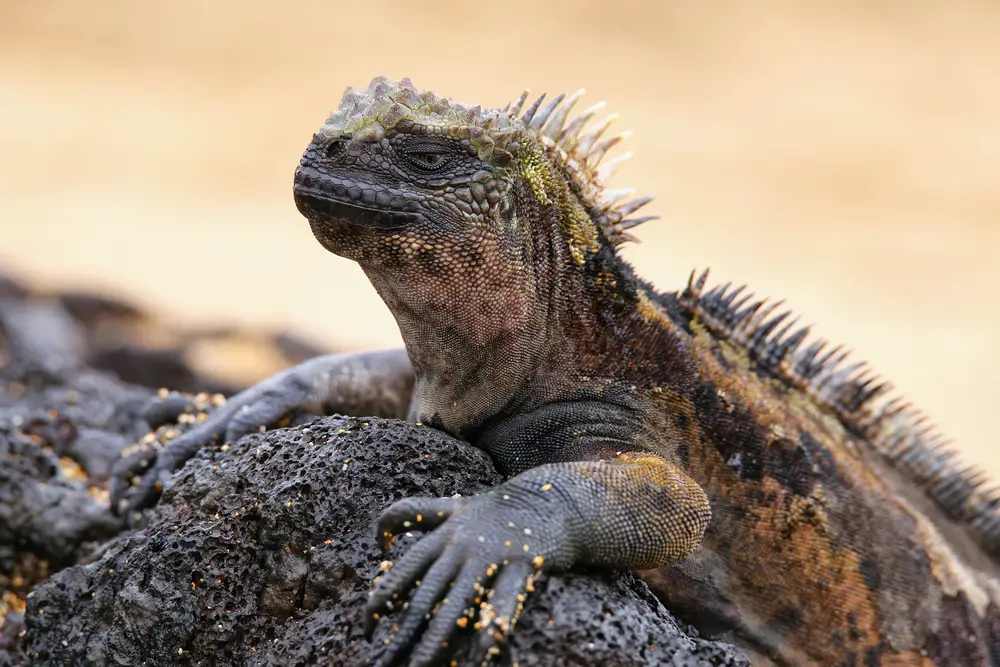
When it comes to dining with a view, marine iguanas might just take the cake—or rather, the seaweed salad. These lizards from the Galapagos Islands are the only iguanas that venture into the ocean to graze on algae. You’d think their diet would be a little more varied, but they’re happy to munch on greens from the sea. The twist? To deal with the salt intake from their oceanic meals, they have a special gland that allows them to “sneeze” out excess salt. It’s like having a built-in desalination plant right in their bodies.
Watching these iguanas hang out on sun-dappled rocks, you’d never guess they have such a unique dietary trick. That sneeze might not win any awards for elegance, but it’s incredibly efficient, keeping their bodies perfectly balanced. It’s another quirky example of how evolution finds ways to make even the strangest diets work. So next time you’re at the beach, spare a thought for these salty vegetarians and their ocean-bound buffet.
7. Parrotfish: The Architects Of White Sand Beaches
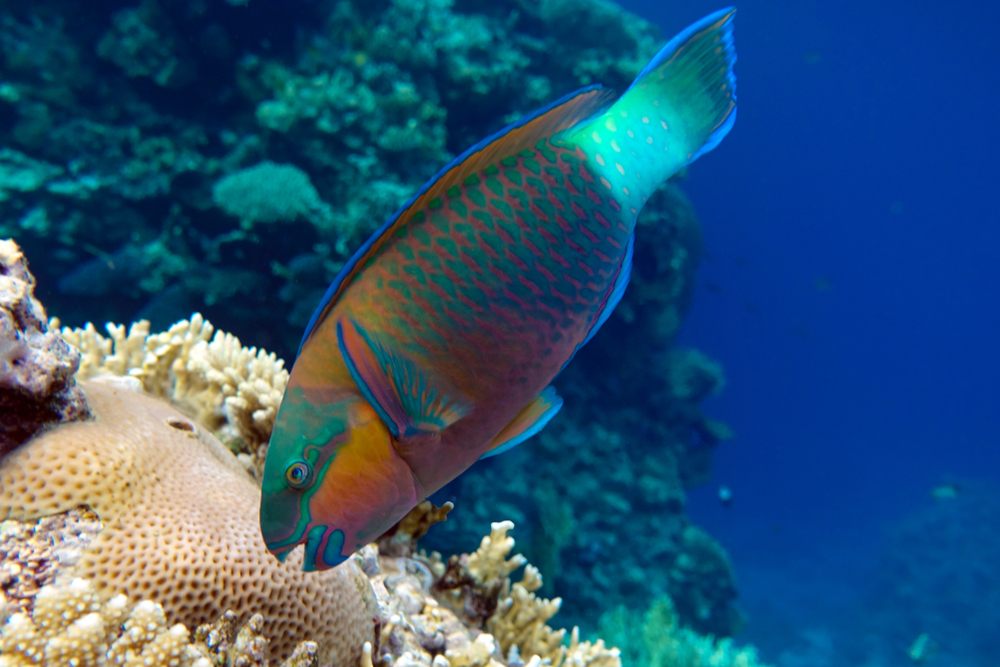
Moving from leafy greens to the underwater world, parrotfish have a diet that doubles as a natural construction tool. These vibrant fish are known for their strong, beak-like mouths that they use to munch on coral. But wait, you might ask, how does this make any sense? Well, in breaking down coral, they excrete the indigestible parts as sand. That’s right—white sandy beaches owe a lot to the dining habits of parrotfish.
So, every time you sink your toes into a soft, sandy beach, you’re essentially stepping on the byproduct of their meal. It’s a pretty sweet deal for beachgoers, although the parrotfish are just doing their part to keep the coral ecosystem in check. Their eating habits might seem bizarre, but they’ve got the beach tourism industry to thank. It’s a small reminder of how interconnected our natural world can be. Next time you’re lounging on a beach, maybe give a little nod of thanks to these industrious fish.
8. The Honey Badger: Fearless Scavenger With A Sweet Tooth
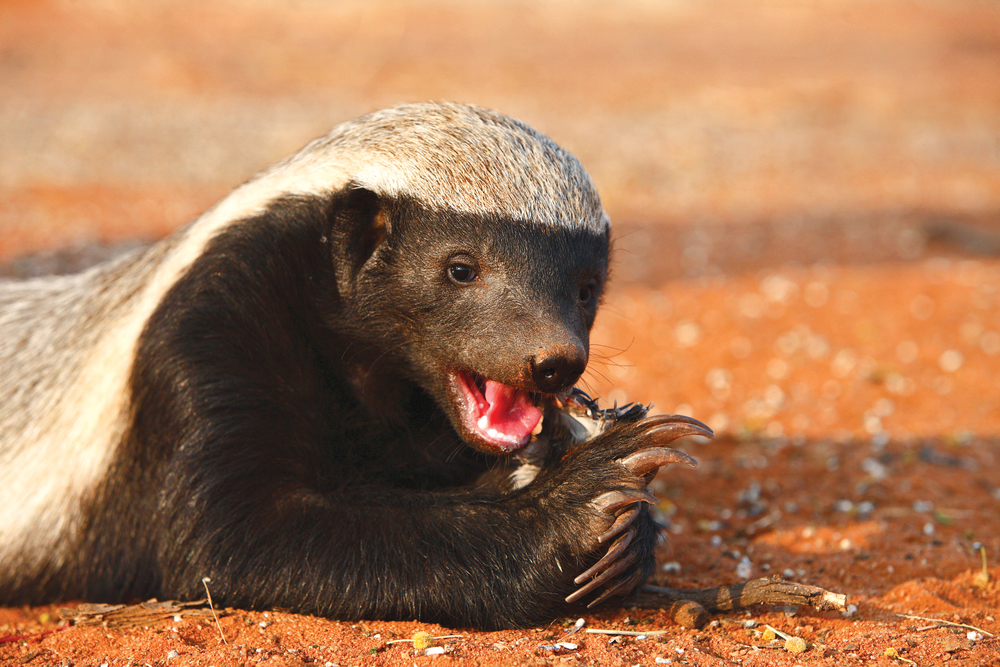
The honey badger is infamous for its tough demeanor and fearless attitude, but did you know it also has a peculiar craving for honey? These little powerhouses will go to great lengths to find beehives, tearing into them with little regard for the stings of angry bees. It’s like nature’s own version of a daredevil dessert enthusiast. The honey is sweet, but the risk? It’s not something most animals would endure. Yet, for the honey badger, it’s just another day, another sweet success.
Even more fascinating is their relationship with the greater honeyguide bird, which leads honey badgers to hives in exchange for the wax left behind. It’s a win-win situation: the badger gets its sugar fix, and the bird gets a meal it couldn’t access on its own. Together, they make quite the team, albeit an unusual one. It’s a reminder that sometimes a little teamwork and a shared sweet tooth can lead to success, no matter how risky the endeavor may seem.
9. The Star-Nosed Mole: Fastest Feeder With A Strange Setup
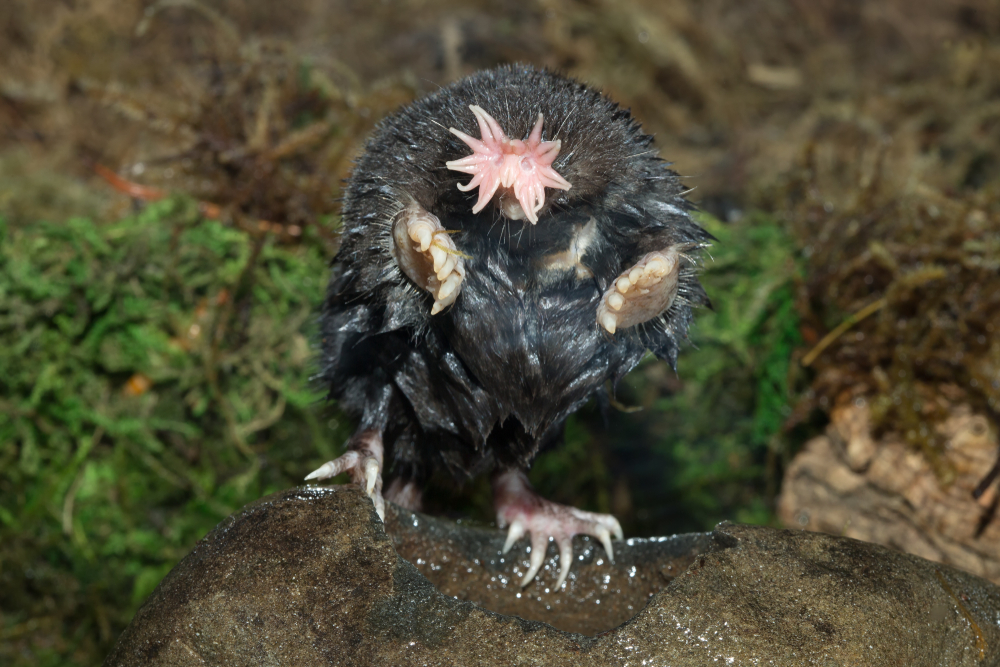
Enter the star-nosed mole, a creature with a face only a mother could love but a dietary prowess that would impress any speed eater. This odd-looking animal has a nose adorned with 22 fleshy appendages, which it uses to detect prey in the blink of an eye—literally. In less than a quarter of a second, it identifies, captures, and devours its meal, making it the fastest eater in the animal kingdom. Talk about efficiency!
Its diet consists mainly of insects, worms, and small aquatic creatures—not exactly a gourmet spread, but it works. The star-nosed mole’s unique nose acts like a high-speed sensory device, helping it navigate through its subterranean world with ease. So while its appearance might be unusual, there’s no denying it’s got a face made for function. If you ever feel like you’ve inhaled your food, remember the star-nosed mole is the undisputed champion of speed dining.
10. The Diet Of Rocks: Meet The Gastrolith-Swallowing Crocodiles
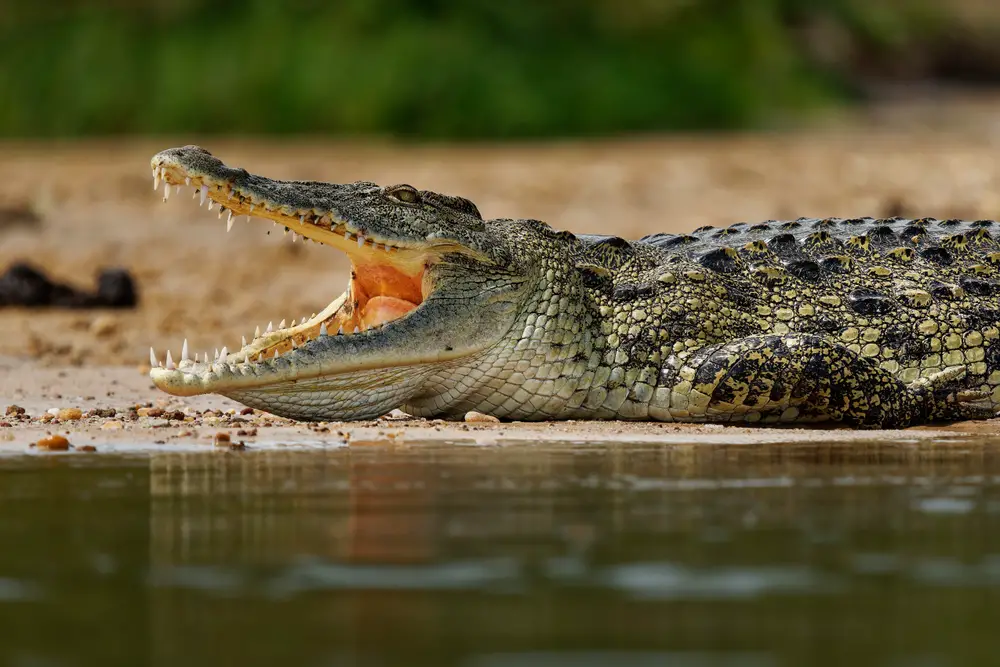
Crocodiles have a reputation for being fearsome predators, but did you know they also have a taste for…rocks? That’s right, these ancient reptiles swallow stones known as gastroliths. While it might sound like they’ve got a case of pica, these rocks serve a practical purpose. They help grind up food in the crocodile’s stomach and add weight, which aids in buoyancy and balance when swimming.
For a creature that spends so much time in the water, it turns out the rocks are a valuable part of its dietary toolkit. It’s a fascinating insight into how even the most fearsome predators can have a quirky side. Next time you see a crocodile stealthily gliding through the water, remember, it’s probably packing a few rocks in its belly. It’s a reminder that sometimes, nature’s fiercest creatures have more than one trick up their scaly sleeves.
11. Koalas: Eucalyptus-Eating Machines With A Complicated Digestive System
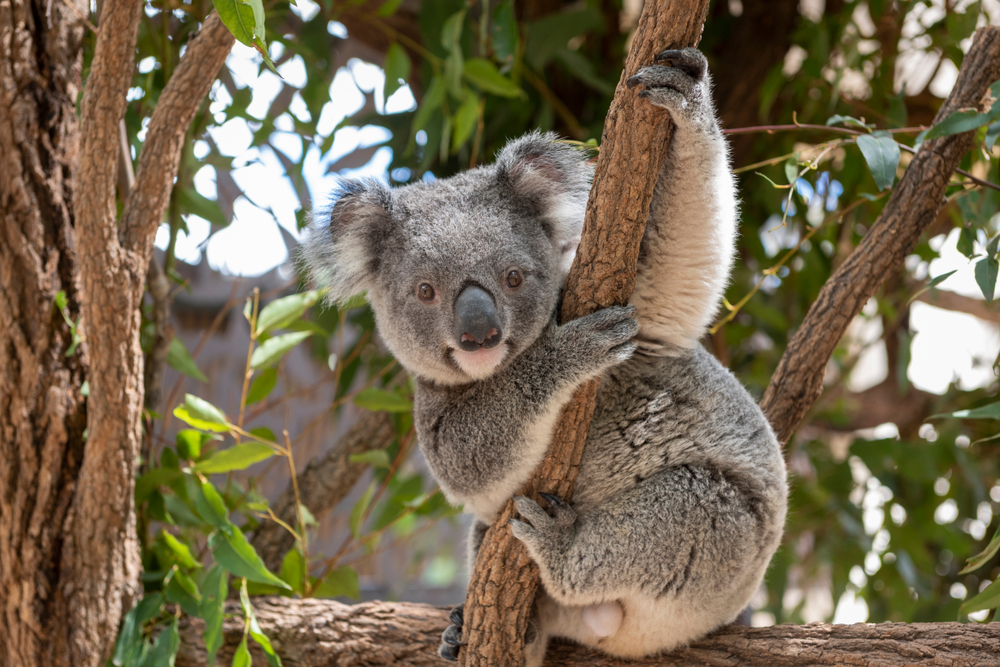
Koalas are often portrayed as the cuddly face of Australia, but their dietary habits are anything but simple. Their exclusive diet of eucalyptus leaves sounds straightforward until you consider the leaves’ toxicity and low nutritional value. Koalas have developed a highly specialized digestive system to break down these tough leaves and detoxify the poisons. It’s a slow process, and as a result, koalas spend most of their time sleeping to conserve energy.
Despite the challenges, they’re fiercely devoted to their leafy diet, rarely straying from it. This commitment comes with its own set of challenges, though, making koalas particularly vulnerable to habitat loss. What’s on their plate is so integral to their survival that even small changes in eucalyptus availability can have big impacts. So while they might seem like they’re living the lazy life, their eating habits are a testament to the complex relationship between diet and survival.
12. Sloths: Masters Of Slow Dining With Leafy Snacks
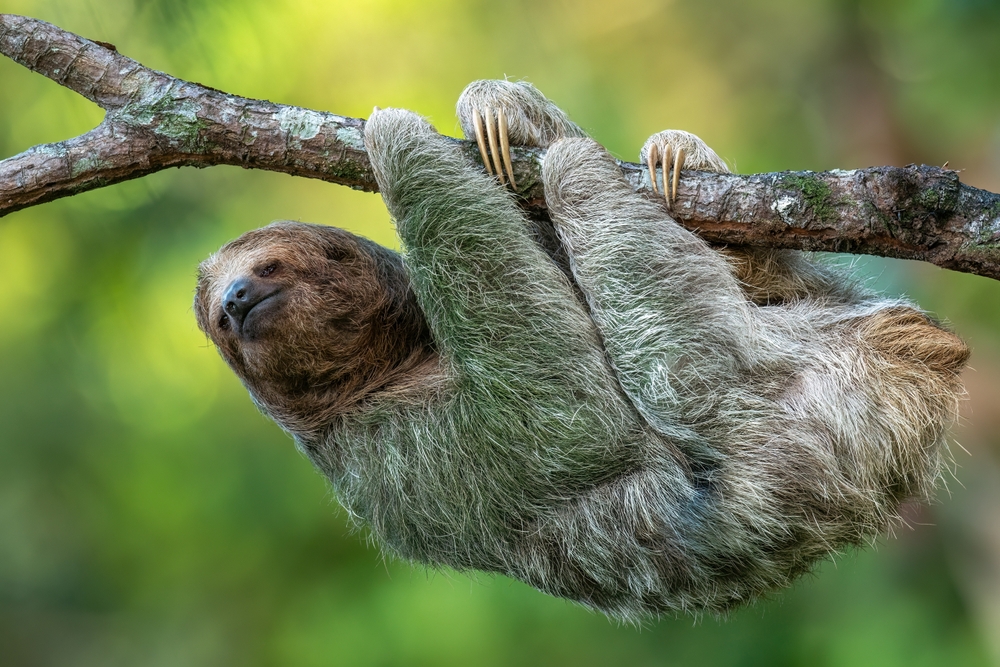
Sloths are the ultimate chillers of the animal world, and their dining habits reflect this laid-back lifestyle. They primarily feast on leaves, which are tough to digest and low in calories. This slow-paced animal has an equally slow metabolism to match, digesting their leafy meals over the course of several days. It’s a lifestyle that requires patience and a lot of hanging around, literally.
Their slow dining habits are part of a bigger survival strategy. By moving less and eating low-energy foods, sloths manage to evade predators and conserve energy. It’s a life of leisure, but one perfectly adapted to their treetop homes. So while they might take their time over meals, it’s a strategy that’s served them well in the wild. Next time you’re rushing through lunch, take a leaf out of the sloth’s book and savor the moment.
13. Bearded Vultures: Bone-Crunching Connoisseurs Of The Skies

The bearded vulture has a diet that sets it apart from other birds of prey—it feeds primarily on bones. While other vultures pick at the flesh of carrion, the bearded vulture waits for its moment to swoop in and snatch up the bones left behind. This bird of prey has powerful digestive enzymes that break down bone into digestible calcium-rich powder. It even drops larger bones from great heights to shatter them into bite-sized pieces—a feeding habit that’s as resourceful as it is unique.
This dining strategy allows the bearded vulture to access nutrients that others leave behind, making it a key player in its ecosystem. And don’t worry if it seems like they’re missing out—these birds can survive on bones alone, thanks to their unique adaptations. So next time you’re worried about finding something to eat, think of the bearded vulture and its bone-breaking buffet. It’s a reminder that sometimes the best meals are the ones that others overlook.
14. Seahorses: The Romantic, Ambush Feeding Experts
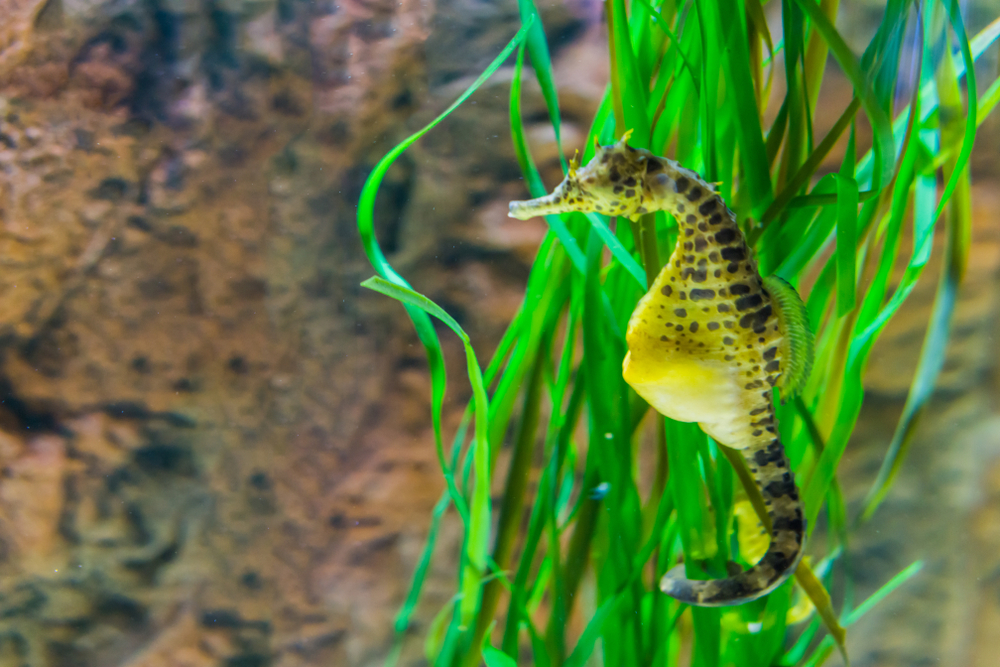
Seahorses are not just famous for their endearing mating rituals, but also for their unusual feeding habits. With no teeth and no stomach, these fish have a unique way of consuming their prey. They use their elongated snouts to suck in plankton and small crustaceans with lightning-fast, ambush-style tactics. And because they lack a stomach, they have to eat almost constantly to get the nutrients they need.
Their diet might seem like a never-ending cycle of tiny meals, but it works for them. It’s a lifestyle that requires little energy, perfectly suited to their gentle, drifting movements. Watching a seahorse feed is like a slow dance, each meal a tiny part of their day-long routine. It’s a reminder of the diversity in nature, where even the simplest feeding habits can be fascinatingly complex.
15. Kakapo: The Heavyweight Herbivore With A Love Of Fruit
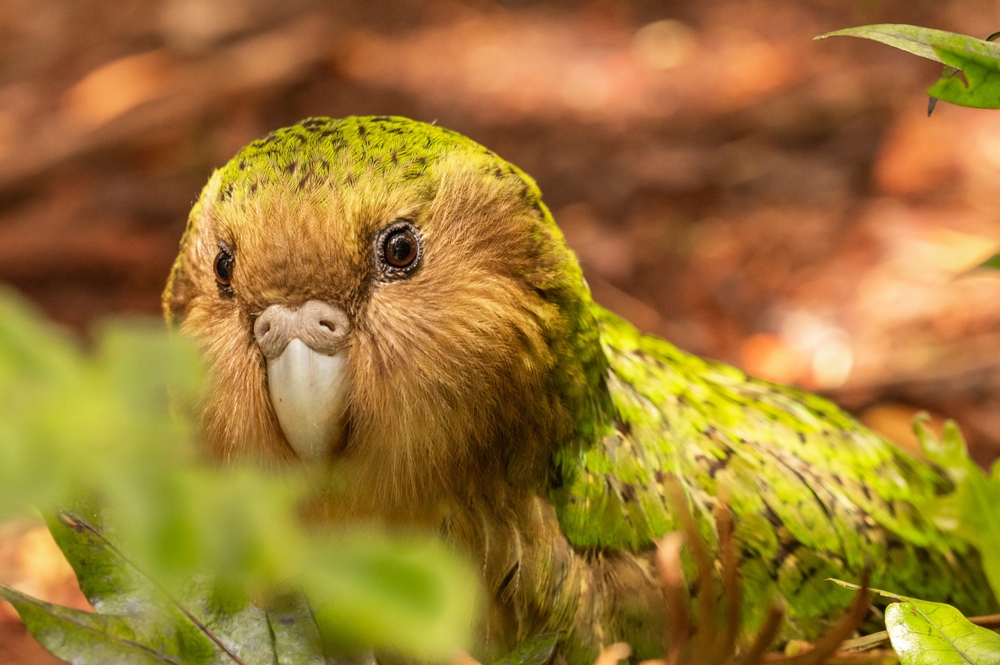
The kakapo is one of New Zealand’s most unique birds, and its eating habits are just as intriguing. As the world’s heaviest parrot, it’s flightless and spends its nights munching on a variety of plants, fruits, and seeds. It’s particularly fond of the rimu fruit, which plays a crucial role in its breeding cycle. The kakapo time its mating to coincide with the fruiting of these trees, making their diet a vital part of their reproductive strategy.
It’s a bird that is as selective in its meals as it is in its mating habits. With its distinctive boom calls resonating through the forest, the kakapo’s search for food is intertwined with its search for a mate. It’s a reminder of how diet and reproduction can be interconnected in the animal kingdom. And while the kakapo might be a bit of an oddity, its eating habits showcase the delicate balance of nature’s timing.
